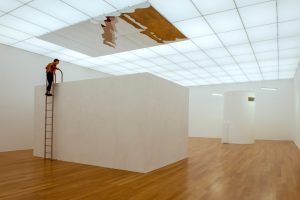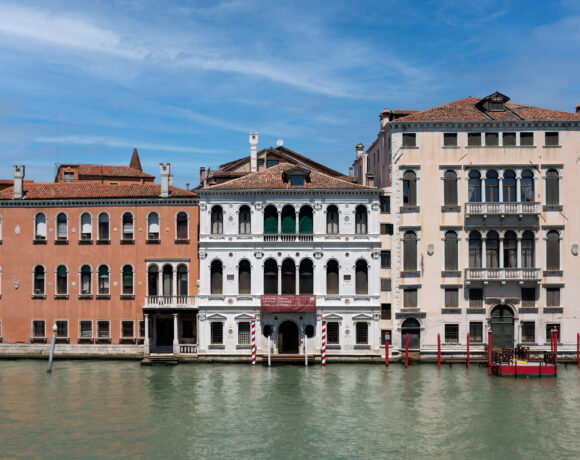Opened in 2000, the Kunstmuseum Liechtenstein is a state modern and contemporary art museum with an international scope. In 2015, the new Hilti Art Foundation building was added to the existing complex. The Liechtenstein state collection forms the founding nucleus of the museum and is the basis of the exhibition program, but it is also a dynamo for the institution’s educational purpose. The collection is presented through temporary exhibitions that complement the major exhibitions that follow one another in the annual calendar and that deepen the international art from the twentieth and twenty-first centuries. The private collection held by the Hilti Art Foundation, which places greater emphasis on exceptional art works from classical modernism and contemporary art, is the ideal complement to the collections of the Kunstmuseum.
Letizia Ragaglia, after completing her mandate at the Museion in Bolzano, has been in charge of the Kunstmuseum in Vaduz, Liechtenstein since 1 July 2021. Now she signs the first exhibition designed for the Kunstmuseum Liechtenstein: C(to the power of)4, with the participation of four internationally renowned artists who have been asked to compete with the works in the Museum’s collections: Nazgol Ansarinia (Iranian , born in 1979), Mercedes Azpilicueta (Argentine, born in 1981), Invernomuto (Italian duo, i.e. Simone Bertuzzi, born in 1983 and Simone Trabucchi, born in 1982), Diamond Stingily (American, born in 1990). Specifically, the artists were invited to choose a work from the collection by integrating it into their own set-up, as in a sort of orientation and dialogue between past and future.
Here is the exhibition explained in the words of the curator: “ C(to the power of)4 celebrates the energy that contemporary artists bring to a museum: the C in the title of the exhibition refers to the collection as a base and starting point, but it also evokes associations with cooperation, collaboration and contamination». This wants to underline how art is all contemporary: it is our gaze that makes it current and speaking to our heart, and the intertwining and cross-references are explained by our culture, by our way of proceeding, in relation to our knowledge and all that set of sensorial factors that allow us to play on relationships and on intertwined paths. But not only this; here we want to make it clear that art has the potential to make people relate, so that the language of modernity can offer a boost even in the field of social cohesion or, more simply, be a thermometer of the great problems of humanity.
These four artists share a narrative approach that opens up new perspectives on the past by offering an alternative reading in the light of today’s reality. Coming from different cultural backgrounds, each of them explores themes such as social exclusion and discrimination, the history of subcultures, the legends of the past and the transformation of urban space (from urban plans lowered by the other to gentrification from below). Biographical elements and personal memories punctuate the exhibition path to build a new collective memory, something that can be delivered in the form of a story or a note for future generations.
Crossing C(to the power of)4 the visitor finds himself immersed in an interdisciplinary crossover of performance and sound, in a path that is divided into four exhibition rooms in which surprising encounters give new life to the collection.
Gaia Rebullato
Info:
AA.VV., C(to the power of)4
20/05 – 05/09/2022
Kunstmuseum Vaduz, Liechtenstein
kunstmuseum.li
 Nazgol Ansarinia, installation view of C(to the power of)4. Photo Sandra Maier, courtesy Kunstmuseum Liechtenstein
Nazgol Ansarinia, installation view of C(to the power of)4. Photo Sandra Maier, courtesy Kunstmuseum Liechtenstein
 Mercedes Azpilicueta, installation view of C(to the power of)4. Photo Sandra Maier, courtesy Kunstmuseum Liechtenstein
Mercedes Azpilicueta, installation view of C(to the power of)4. Photo Sandra Maier, courtesy Kunstmuseum Liechtenstein
 Invernomuto, installation view of C(to the power of)4, (Wax, Relax, 2011-2022; Rimini Capitale Afro, 2021, in dialogue with Ponte levatoio, 1968, by Pino Pascali, Collection Kunstmuseum Liechtenstein). Photo Stefan Altenburger Photography, Zurich, © Invernomuto / Kunstmuseum Liechtenstein, courtesy Kunstmuseum Liechtenstein
Invernomuto, installation view of C(to the power of)4, (Wax, Relax, 2011-2022; Rimini Capitale Afro, 2021, in dialogue with Ponte levatoio, 1968, by Pino Pascali, Collection Kunstmuseum Liechtenstein). Photo Stefan Altenburger Photography, Zurich, © Invernomuto / Kunstmuseum Liechtenstein, courtesy Kunstmuseum Liechtenstein

is a contemporary art magazine since 1980






NO COMMENT